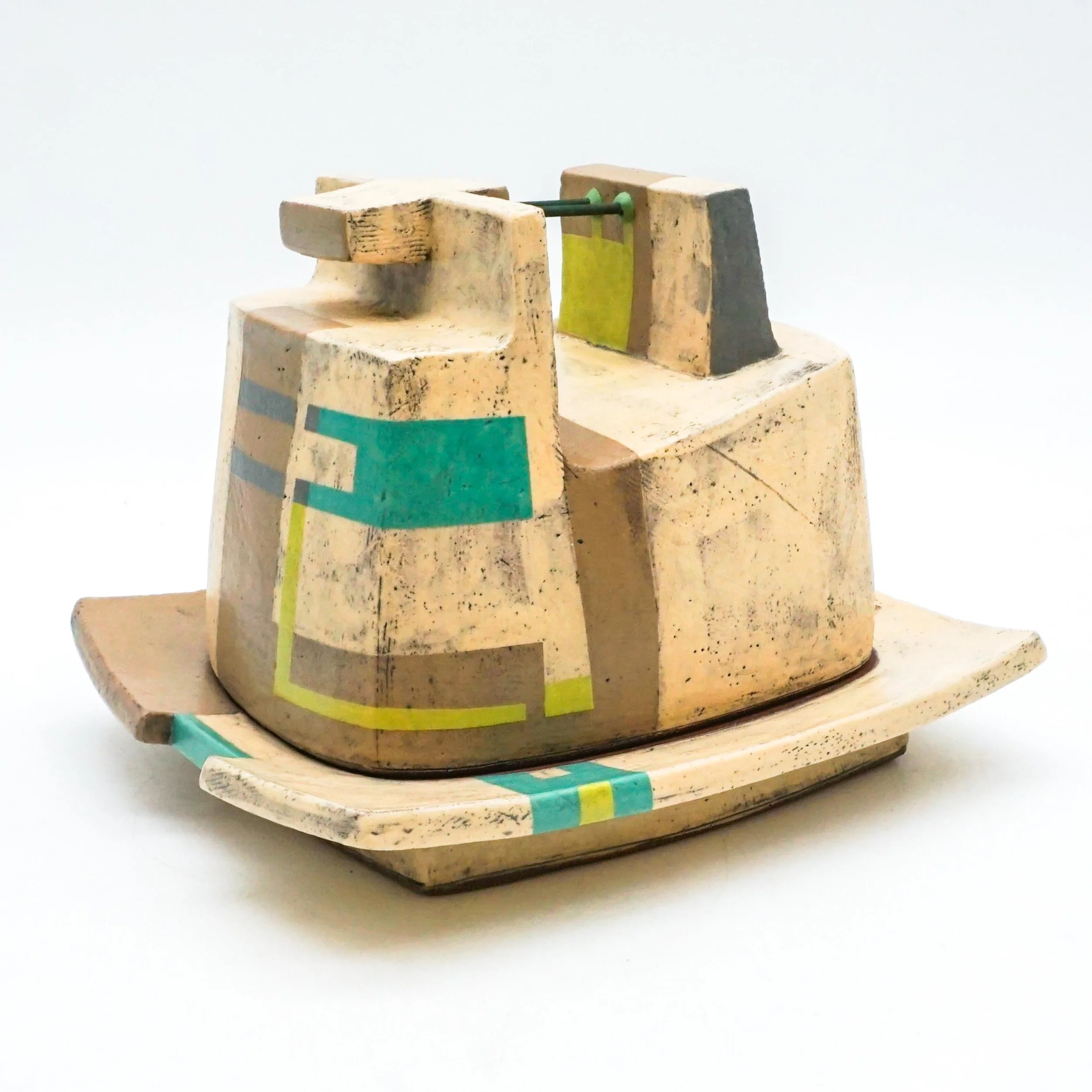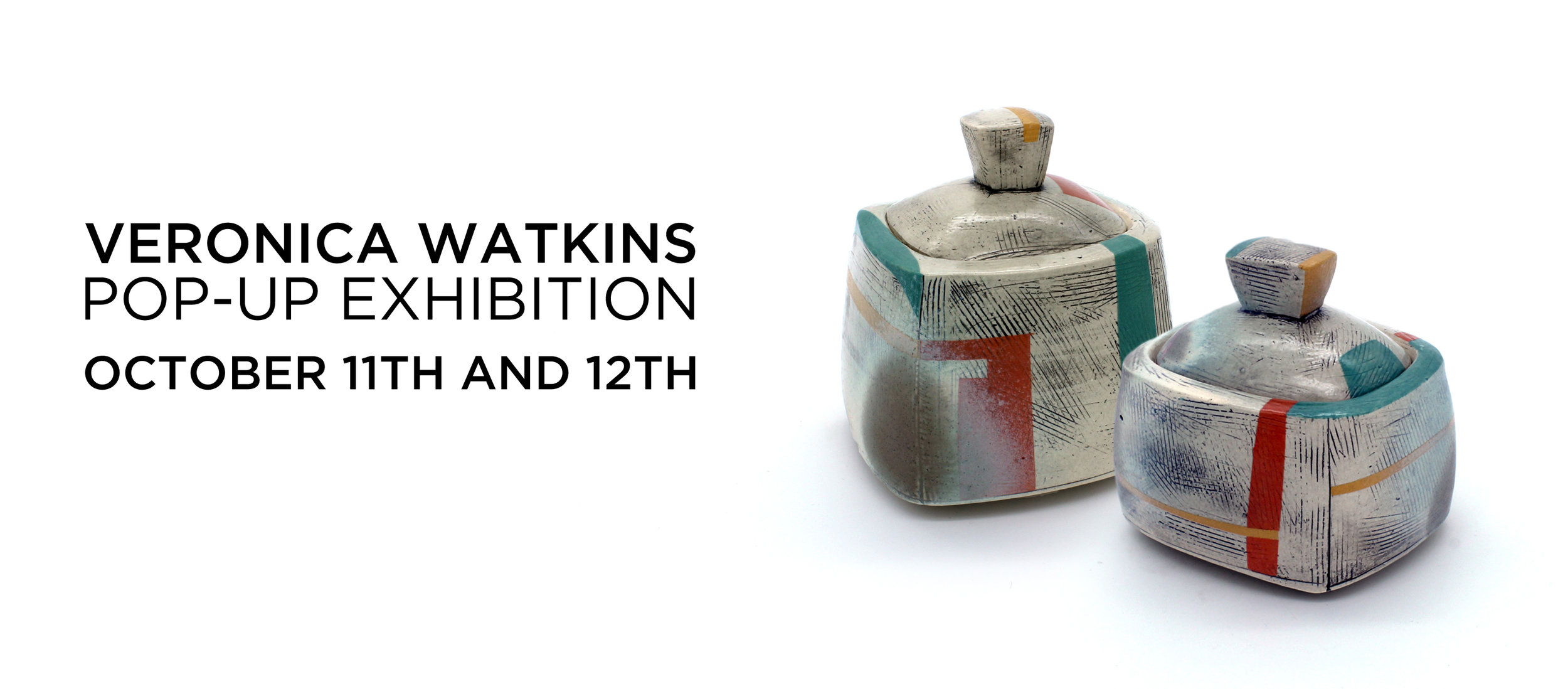veronica watkins
bio
Veronica Watkins grew up in the Kansas City, Missouri area. She received a BFA from Northwest Missouri State University in 1996; she went on to receive an MFA from Southern Illinois University at Carbondale in 2000. She resides on a hilltop cattle ranch in Maryville, Missouri, where she takes care of her family, maintains a studio practice, and teaches as the Associate Professor of Ceramics at Northwest Missouri State University. She has spent time in residency at The Clay Studio of Missoula and at Belger Crane Yard Studios in Kansas City, and at Red Lodge Clay Center in Montana. Her work has been exhibited in regional, national, and international shows.
artist statement
“My work reflects a fascination with formal, compositional exploration and utilitarian objects. The wonder of pottery is that it has the potential to become the user’s companion each day. It is taken into the home, and into the hand of the user—a very personal space. The fired clay object is a record of a series of moments, movements and decisions, potentially permanently captured. There is a tactile, experiential connection between the maker and the user through the object. I am compelled to make and persistently hold to the commitment that beautiful handmade objects impact our existence especially as our world becomes more virtual. I am aware of the influences both visually and conceptually of the Mingei craft movement and the teachings of the Bauhaus in regard to my work. My challenge is to consider the history of pottery and try to add something personal to it through my work.
I have discovered that there are physical processes, which make me feel personally connected to my work, challenge my skills and propel ideas. These processes have been mainly throwing on the wheel and then altering the forms with the addition of hand-built elements. This process sets up a marriage of the organic and geometric that is critical for me. I want the eye to move around and in and out of forms, which is done through the arrangement of planes and edges. These arrangements of form, color, shape, line and texture are evidence of a combination of absorbed visual life experiences. I see a combination of city influences from my upbringing in an urban environment paired with rural landscape components that surround me now daily. These influences appear as abstract universal symbolism, having plural meanings that relate to landscape and architecture. My formal approach seems to be a cyclical examination in the power of juxtapositions. Experimentation and improvisation continue to be important to me as I am repeatedly asking myself “What if?” working through each form. I sense a balance between the rational and spontaneous during the making process.







